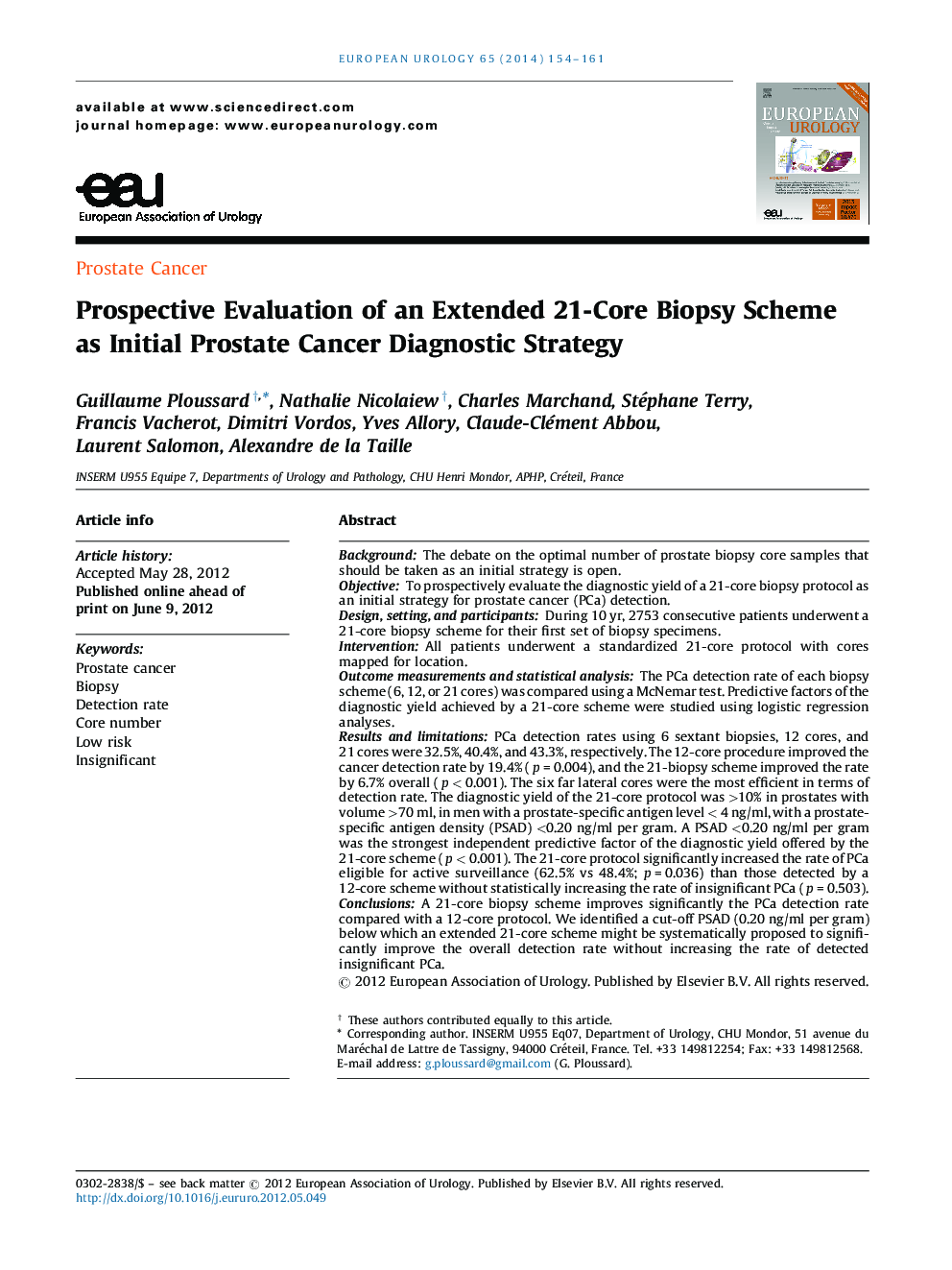| Article ID | Journal | Published Year | Pages | File Type |
|---|---|---|---|---|
| 3925039 | European Urology | 2014 | 8 Pages |
BackgroundThe debate on the optimal number of prostate biopsy core samples that should be taken as an initial strategy is open.ObjectiveTo prospectively evaluate the diagnostic yield of a 21-core biopsy protocol as an initial strategy for prostate cancer (PCa) detection.Design, setting, and participantsDuring 10 yr, 2753 consecutive patients underwent a 21-core biopsy scheme for their first set of biopsy specimens.InterventionAll patients underwent a standardized 21-core protocol with cores mapped for location.Outcome measurements and statistical analysisThe PCa detection rate of each biopsy scheme (6, 12, or 21 cores) was compared using a McNemar test. Predictive factors of the diagnostic yield achieved by a 21-core scheme were studied using logistic regression analyses.Results and limitationsPCa detection rates using 6 sextant biopsies, 12 cores, and 21 cores were 32.5%, 40.4%, and 43.3%, respectively. The 12-core procedure improved the cancer detection rate by 19.4% (p = 0.004), and the 21-biopsy scheme improved the rate by 6.7% overall (p < 0.001). The six far lateral cores were the most efficient in terms of detection rate. The diagnostic yield of the 21-core protocol was >10% in prostates with volume >70 ml, in men with a prostate-specific antigen level < 4 ng/ml, with a prostate-specific antigen density (PSAD) <0.20 ng/ml per gram. A PSAD <0.20 ng/ml per gram was the strongest independent predictive factor of the diagnostic yield offered by the 21-core scheme (p < 0.001). The 21-core protocol significantly increased the rate of PCa eligible for active surveillance (62.5% vs 48.4%; p = 0.036) than those detected by a 12-core scheme without statistically increasing the rate of insignificant PCa (p = 0.503).ConclusionsA 21-core biopsy scheme improves significantly the PCa detection rate compared with a 12-core protocol. We identified a cut-off PSAD (0.20 ng/ml per gram) below which an extended 21-core scheme might be systematically proposed to significantly improve the overall detection rate without increasing the rate of detected insignificant PCa.
